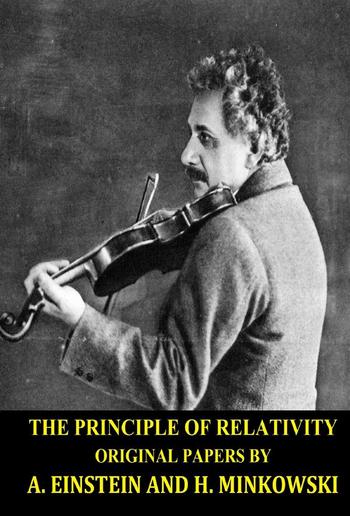
Einstein Albert - The Principle of Relativity ( Original Papers) by Albert Einstein and Hermann Minkowski
The Principle of Relativity ( Original Papers) by Albert Einstein and Hermann Minkowski
Einstein Albert, Minkowski Hermann
Description
This book is by no means a comprehensive study of Minkowski's and Einstein's space-time formalism of special relativity. The mathematician, Hermann Minkowski was Einstein's former mathematics professor at the Zürich Polytechnic. During his studies at the Polytechnic Einstein skipped Minkowski's classes. In 1904 Max Born arrived in the first time to Göttingen. Many years later Born wrote his recollections. In the summer of 1905, Minkowski and Hilbert led an advanced seminar on mathematical physics, on electrodynamical theory. Minkowski told Born later that it came to him as a great shock when Einstein published his paper in which the equivalence of the different local times of observers moving relative to each other was pronounced; for he had reached the same conclusions independently. He never made a priority claim and always gave Einstein his full share in the great discovery. In his famous talk, "Space and Time" Minkowski wrote that the credit of first recognizing sharply that t and t' are to be treated the same, is of A. Einstein.TABLE OF CONTENTSHISTORICAL INTRODUCTION 8Conclusion 20Note A. 22On The Electrodynamics of Moving Bodies By A. Einstein. 23INTRODUCTION. 24I.—KINEMATICAL PORTION. 25§ 1. Definition of Synchronism. 25§ 2. On the Relativity of Length and Time. 26Relativity of Time. 27§ 3. Theory of Coordinate and Time-Transformation from a stationary system to a system which moves relatively to this with uniform velocity. 28§ 4. The physical significance of the equations obtained concerning moving rigid bodies and moving clocks. 34§ 5. Addition-Theorem of Velocities. 36II.—ELECTRODYNAMICAL PART. 39SPACE AND TIME 128The Foundation of the Generalised Theory of Relativity By A. Einstein. From Annalen der Physik 4.49.1916. 142A Principal considerations about the Postulate of Relativity. 142§ 1. Remarks on the Special Relativity Theory. 142§ 2. About the reasons which explain the extension of the relativity-postulate. 143§ 3. The time-space continuum. Requirements of the general Covariance for the equations expressing the laws of Nature in general. 145§ 4. Relation of four co-ordinates to spatial and time-like measurements. 147B Mathematical Auxiliaries for Establishing the General Covariant Equations. 1495. Contravariant and covariant Four-vector. 149§ 6. Tensors of the second and higher ranks. 151§ 7. Multiplication of Tensors. 154§ 9. Equation of the geodetic line (or of point-motion). 162§ 10. Formation of Tensors through Differentiation. 165§12. The Riemann-Christoffel Tensor. 176C. THE THEORY OF THE GRAVITATION-FIELD 179§13. Equation of motion of a material point in a gravitation-field. Expression for the field-components of gravitation. 179§14. The Field-equation of Gravitation in the absence of matter. 180§15. Hamiltonian Function for the Gravitation-field. Laws of Impulse and Energy. 181§16. General formulation of the field-equation of Gravitation. 185§17. The laws of conservation in the general case. 186§18. The Impulse-energy law for matter as a consequence of the field-equations. 188D. THE “MATERIAL” PHENOMENA. 190D. THE “MATERIAL” PHENOMENA. 202

